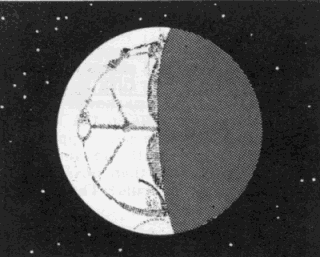 |
Science Frontiers ONLINE No. 137: SEP-OCT 2001 |
|
|
The Ashen Light Of Venus
Closing The BookScientists are understandably delighted when they believe they have definitively and indisputably explained one of Nature's many mysteries. They can then finally "close the book" on the phenomenon. Sometimes, though, the book is slammed shut prematurely or unjustifiably. Also, as it often happens, closing one book opens another and the new one is even harder to close. Below, we present three examples where finality (closed books) seems to be proclaimed too quickly.
On occasion, the night side of Venus (which goes through phases like the moon) seems to glow softly and subtly. For some 350 years, keen-eyed observers have seen this phenomenon through their telescopes. Nevertheless, the effect is so elusive that many astronomers doubt its physical reality. Additionally, it is easy to doubt the existence of the ashen light because good explanations are as elusive as the light itself.
During the past decade, two scientific nails have also been driven into the ashen-light coffin:
- Spectrographic studies of the upper atmosphere of Venus do detect some nighttime air glow, but it is much too weak to account for the abundant telescopic observations from earth.
- The Cassini spacecraft did not detect any high-frequency radio noise typical of lightning when it passed close to Venus in 1998 and 1999. This put an end to the surmise that the ashen light was due to rapid, widespread lightning occurring deep inside the planet's thick atmosphere and then blended into a steady glow by atmospheric scattering.
(Anonymous; "Case for 'Ashen Light' Weakens," Sky & Telescope, 101:27, May 2001.)
Comment. It seems that the ashen-light phenomenon is within an Angstrom Unit of being closed; first, because instruments cannot detect what the human eye sees; and second, and more important, science knows of no physical mechanism that might create the light. This latter attitude is dangerous. For example, the reality of continental drift was dismissed contemptuously for decades for the lack of a physical mechanism to move the continents. For a collection of ashen-light reports, see AVO3 in The Moon and the Planets.
 An 1897 sketch of Venus as seen through a telescope. The rare, mysterious spoke system is seen on the sunlit side. The dark side is bathed in the so-called ashen light. (From: The Moon and the Planets) |
Other Sites of Interest
|